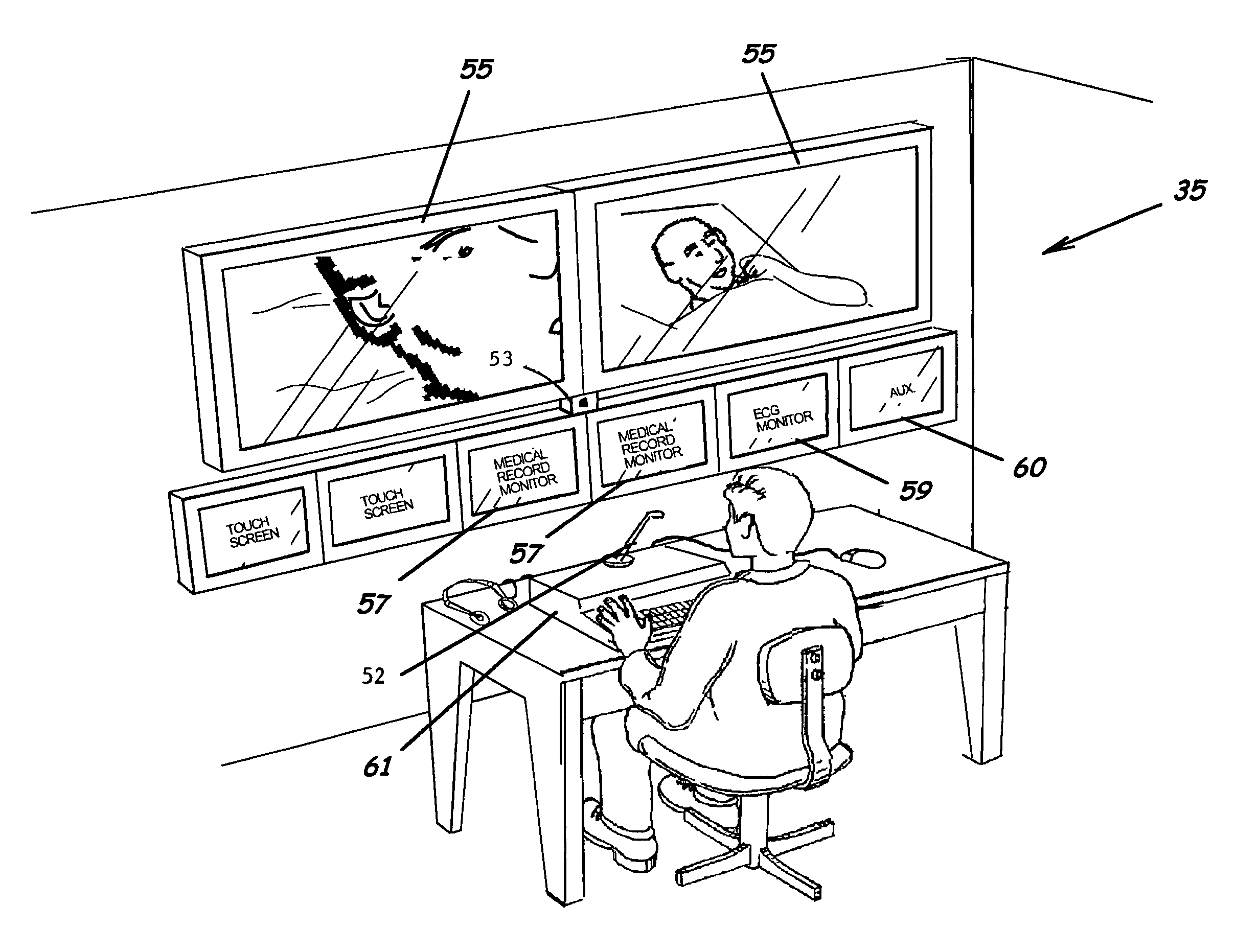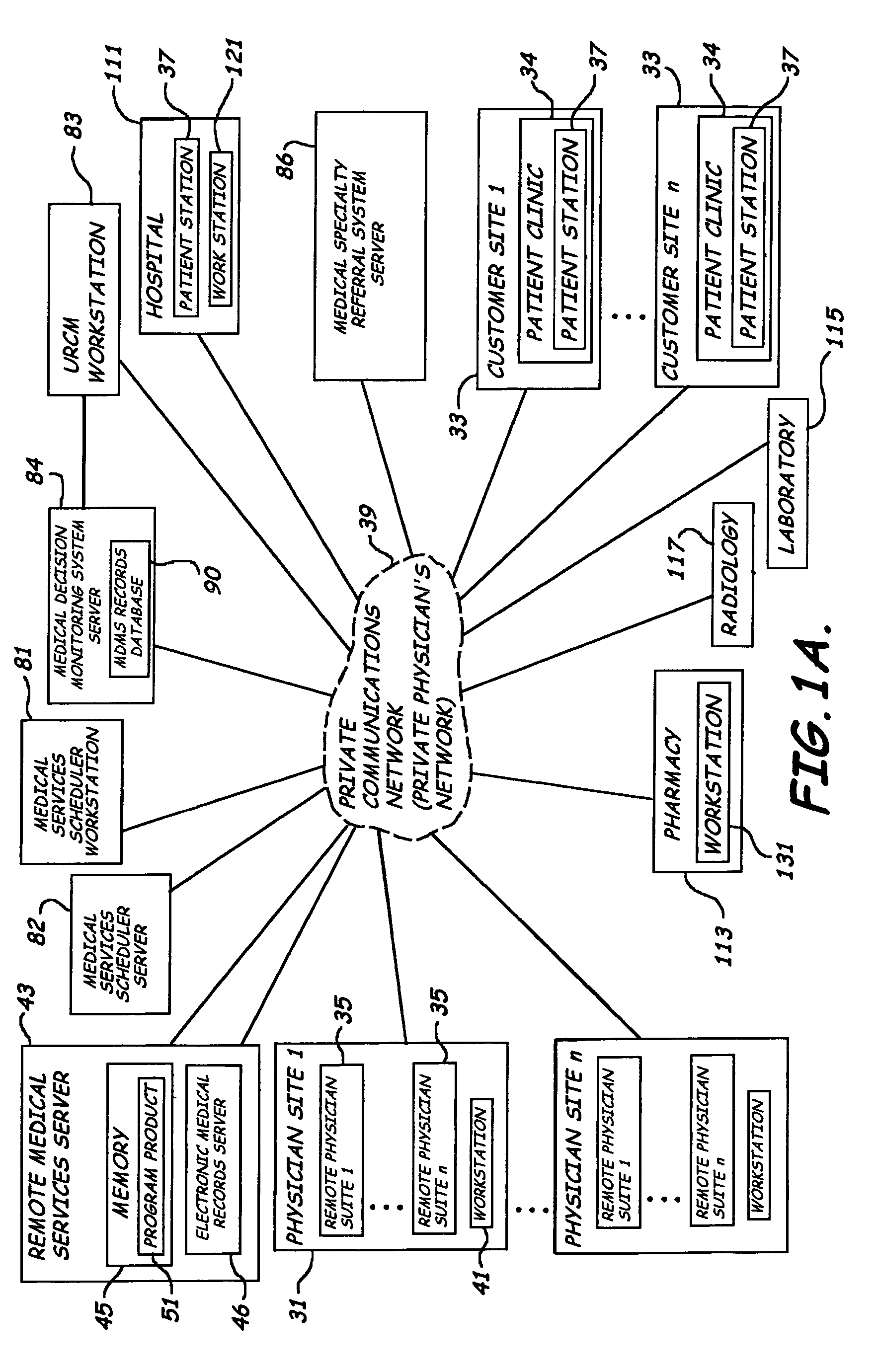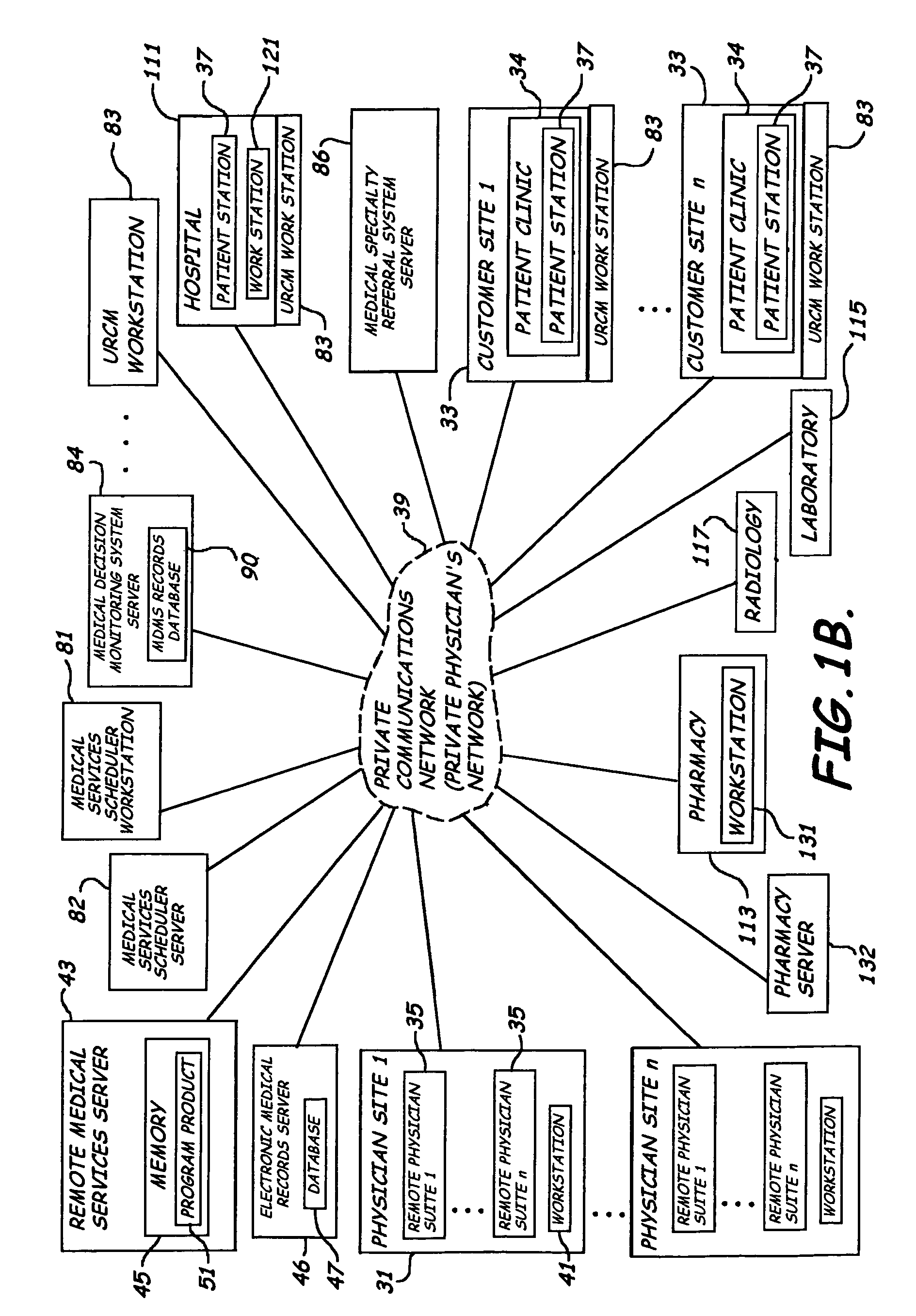System, method and program product for delivering medical services from a remote location
a technology for remote locations and medical services, applied in the field of medical services, can solve the problems of insufficient population, inability to fully provide for all the branches of patient care, and insufficient internal resources of such facilities, so as to reduce the need for discretion and enhance the delivery of medical services
- Summary
- Abstract
- Description
- Claims
- Application Information
AI Technical Summary
Benefits of technology
Problems solved by technology
Method used
Image
Examples
Embodiment Construction
[0057]The present invention now will be described more fully hereinafter with reference to the accompanying drawings, which illustrate embodiments of the invention. This invention may, however, be embodied in many different forms and should not be construed as limited to the illustrated embodiments set forth herein. Rather, these embodiments are provided so that this disclosure will be thorough and complete, and will fully convey the scope of the invention to those skilled in the art. Like numbers refer to like elements throughout. Prime notation, if used, indicates similar elements in alternative embodiments.
[0058]As shown in FIGS. 1A-17, embodiments of the present invention provide a system 30 that includes the provision of remote physician medical services delivered from one or more physician sites 31 to a plurality of geographically distributed customer sites or facilities 33 using communication and information systems that allow an individual live face-to-face medical encounter...
PUM
 Login to View More
Login to View More Abstract
Description
Claims
Application Information
 Login to View More
Login to View More - R&D
- Intellectual Property
- Life Sciences
- Materials
- Tech Scout
- Unparalleled Data Quality
- Higher Quality Content
- 60% Fewer Hallucinations
Browse by: Latest US Patents, China's latest patents, Technical Efficacy Thesaurus, Application Domain, Technology Topic, Popular Technical Reports.
© 2025 PatSnap. All rights reserved.Legal|Privacy policy|Modern Slavery Act Transparency Statement|Sitemap|About US| Contact US: help@patsnap.com



